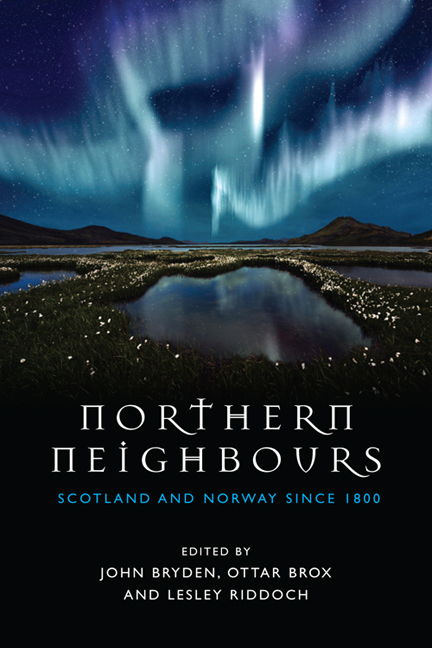Book contents
- Frontmatter
- Contents
- Acknowledgements
- Foreword
- 1 Introduction
- 2 Towards a Theory of Divergent Development
- 3 Cousins Divided? Development in and of Political Institutions in Scotland and Norway since 1814
- 4 Agrarian Change in Scotland and Norway: Agricultural Production, Structures, Politics and Policies since 1800
- 5 The Evolution of Local Government and Governance in Scotland and Norway
- 6 The Development of Industry and North Sea Oil in Scotland and Norway
- 7 Reflections on the Making of Norway
- 8 Money and Banking in Scotland and Norway
- 9 Religion in Scotland and Norway
- 10 The Nordic Welfare Model in Norway and Scotland
- 11 Access, Nature, Culture and the Great Outdoors – Norway and Scotland
- 12 Education in Norway and Scotland: Developing and Re-forming the Systems
- 13 Norway and the United Kingdom/Scotland after the Second World War
- 14 Conclusions
- The Contributors
- Bibliography
- Index
12 - Education in Norway and Scotland: Developing and Re-forming the Systems
Published online by Cambridge University Press: 05 August 2016
- Frontmatter
- Contents
- Acknowledgements
- Foreword
- 1 Introduction
- 2 Towards a Theory of Divergent Development
- 3 Cousins Divided? Development in and of Political Institutions in Scotland and Norway since 1814
- 4 Agrarian Change in Scotland and Norway: Agricultural Production, Structures, Politics and Policies since 1800
- 5 The Evolution of Local Government and Governance in Scotland and Norway
- 6 The Development of Industry and North Sea Oil in Scotland and Norway
- 7 Reflections on the Making of Norway
- 8 Money and Banking in Scotland and Norway
- 9 Religion in Scotland and Norway
- 10 The Nordic Welfare Model in Norway and Scotland
- 11 Access, Nature, Culture and the Great Outdoors – Norway and Scotland
- 12 Education in Norway and Scotland: Developing and Re-forming the Systems
- 13 Norway and the United Kingdom/Scotland after the Second World War
- 14 Conclusions
- The Contributors
- Bibliography
- Index
Summary
OVERVIEW
We examine here the development of public education systems in Norway and Scotland and the ways in which both systems have responded to new challenges. Our focus is on the policies adopted for democratising access to schools and democracy within the schools, the means and mechanisms used in developing Early Childhood Education and Care (ECEC) services and school-age childcare services, and the relationship between schools and communities. We find that national autonomy has made a difference, and that local identity and democracy have also been significant in the three areas examined here. In ECEC, there is a yawning gap in levels of provision between Scotland and Norway, where, from 1975, a strong partnership between local authorities and national government developed a fully integrated system. Post- devolution, growing divergence in educational principles and models between Scotland and England suggests that Scotland should look more to its northern than its southern neighbour in developing some aspects of policy.
EARLY HISTORY
Norway and Scotland both have a long history of school education, dating from the Protestant Reformation and predating the formal establishment of their national education systems. Various versions of religious education existed in Norway from the sixteenth century. This became compulsory through an Education Act passed by Denmark in 1739, requiring Norwegian children from the age of seven in rural areas to learn religion and reading for five years in schools, using the official language of Danish.
A long campaign led to Norway obtaining its first university, in Oslo, in 1811, joined in 1859 by the Agricultural University (now known as the University of Life Sciences or NMBU) in Ås, Akershus. Independence from Denmark in 1814 gave Norway greater control over its institutions, and subsequently the language used for teaching. The nature of the relationship between the Church and schools changed as education became the subject of public debate and the aspirations of newly enfranchised property owners, including small farmers and fishermen (see Chapters 1 and 9). In 1864, inspired by the Danish educationalist Nikolaj Grundtvig, Norway established its first folkehøgskole or folk high school, mentioned later in this chapter. Schools had developed separately in rural and urban areas, with those in rural areas generally taking the form of omgangsskole, a peripatetic school where the teacher travelled around. Urban schools had their own school buildings.
- Type
- Chapter
- Information
- Northern NeighboursScotland and Norway since 1800, pp. 250 - 268Publisher: Edinburgh University PressPrint publication year: 2015



